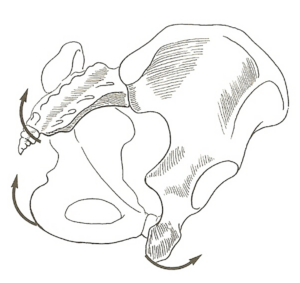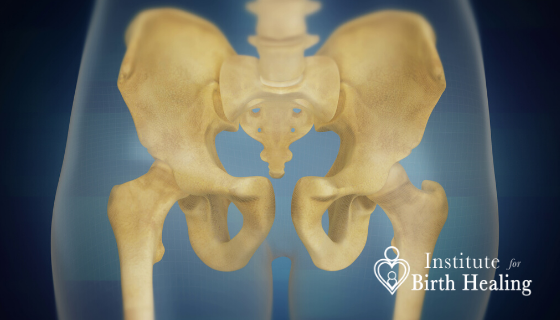Common Pelvic Patterns After Birth
[fusion_builder_container hundred_percent=”no” equal_height_columns=”no” menu_anchor=”” hide_on_mobile=”small-visibility,medium-visibility,large-visibility” class=”” id=”” background_color=”” background_image=”” background_position=”center center” background_repeat=”no-repeat” fade=”no” background_parallax=”none” parallax_speed=”0.3″ video_mp4=”” video_webm=”” video_ogv=”” video_url=”” video_aspect_ratio=”16:9″ video_loop=”yes” video_mute=”yes” overlay_color=”” video_preview_image=”” border_color=”” border_style=”solid” padding_top=”” padding_bottom=”” padding_left=”” padding_right=”” type=”legacy”][fusion_builder_row][fusion_builder_column type=”1_1″ layout=”1_1″ background_position=”left top” background_color=”” border_color=”” border_style=”solid” border_position=”all” spacing=”yes” background_image=”” background_repeat=”no-repeat” padding_top=”” padding_right=”” padding_bottom=”” padding_left=”” margin_top=”0px” margin_bottom=”0px” class=”” id=”” animation_type=”” animation_speed=”0.3″ animation_direction=”left” hide_on_mobile=”small-visibility,medium-visibility,large-visibility” center_content=”no” last=”true” min_height=”” hover_type=”none” link=”” border_sizes_top=”” border_sizes_bottom=”” border_sizes_left=”” border_sizes_right=”” first=”true”][fusion_text columns=”” column_min_width=”” column_spacing=”” rule_style=”default” rule_size=”” rule_color=”” content_alignment_medium=”” content_alignment_small=”” content_alignment=”” hide_on_mobile=”small-visibility,medium-visibility,large-visibility” sticky_display=”normal,sticky” class=”” id=”” margin_top=”” margin_right=”” margin_bottom=”” margin_left=”” font_size=”” fusion_font_family_text_font=”” fusion_font_variant_text_font=”” line_height=”” letter_spacing=”” text_color=”” animation_type=”” animation_direction=”left” animation_speed=”0.3″ animation_offset=””]
Common Pelvic Patterns After Birth
We have some wrong ideas around our bodies and birth. We assume after birth that the body just goes right back to its pre-birth state. In working with hundreds of postpartum women I have found this is not necessarily the case! At first, I thought I was just seeing women whose births were a little more traumatic than “normal” births. But what I’ve come to realize is even “normal” births still leave their mark on women’s pelvis.
While I’ve already written about the trauma’s that occur in the pelvis from childbirth, see this article here, what I’ve come to find even more prevalent in postpartum women is a common pelvic pattern that gets stuck in their body after birth. In releasing these patterns women have experienced profound relaxation and normalization of their body. They finally feel like themselves again!
 While the sacrum is the hinge for birth I find that it doesn’t always move backward evenly. After birth, I find the sacrum on the right-hand side gets jammed superiorly and has decreased mobility in the sacroiliac joint. The left side of the sacrum can move just fine but the right side has decreased mobility.
While the sacrum is the hinge for birth I find that it doesn’t always move backward evenly. After birth, I find the sacrum on the right-hand side gets jammed superiorly and has decreased mobility in the sacroiliac joint. The left side of the sacrum can move just fine but the right side has decreased mobility.
A lot of the time the sacrum is still in a nutated position with the tailbone more posteriorly than what is normal. There is a jamming up of the sacrum into the ilia and vertebra and when I distract the sacrum down on the right-hand side there is that feels so good response in my clients.
Another common pelvic pattern after birth is decreased mobility or accessory play between the pubic bone and the sacrum. While standing on the right side of a woman with my right hand underneath holding onto the lower part of the sacrum and my left hand on the pubic bone there is a decreased mobility of the pubic bone to be able to move to the right. When I reverse this motion on the other side of the body the mobility is fine. It’s like the lower aspect of the sacrum is shifted to the right in the body, decreasing the shearing like accessory play in the pelvis.
In palpating bones you can feel a hardness in the pelvic ring where the bones have experienced more pressures than other areas. Believe it or not our bones have a gentle give to them when compressed. Where there has been excessive pressure or trauma the bones feel really hard and can’t give. Typically I find one side pubic symphysis and pubic rami, most commonly the left, has more hardness than the other. Releasing the hardness in the bone allows for greater distribution of energy throughout the pelvic ring.
This is critical for women who are having symphysis pubis dysfunction in their second pregnancy when they didn’t have any in their first pregnancy. It’s the birth trauma from the first birth that is causing the pain during the second pregnancy. I find that when I release the hardness from the bone, and get the bones back into their normal position, the pressures around the pelvic ring are able to disperse easier and take the excessive pressure off the pubic symphysis joint. This helps eliminate pelvic pain and makes it much more comfortable to carry the baby during the pregnancy. Most of the time it only takes one session to eliminate pelvic pain in my pregnant clients if it’s from a previous birth.
The greatest help we can give postpartum women is to make sure their ischias have come back together into midline after birth. So many women are walking around with one or both ischias still in a splayed out, open birthing position. By helping them come back into the center and balancing this new position with the iliums, women find more balance in their pelvis, make it easier to feel grounded and simply relax their entire pelvic area. It’s also a huge help in getting rid of low back pain.
Internally it is more common to find increased tension in the left side pelvic floor muscles and shearing of the bladder tissue to the left. When palpating the bladder tissues there is less space on the left side around the pubic bone internally than on the right side. I also feel a pulling to the left of the bladder near the bladder neck. Some of these women complain of bladder leakage and when the bladder is restored to its normal position their incontinence improves and goes away, without doing any Kegels.
While I originally thought these patterns were associated with a more challenging birth, women whose birth would be considered normal or “easy” are still presenting with these findings. It doesn’t matter how your birth goes, whether it was fast, easy, or hard, your body is affected by the process and remains imprinted with this pattern until released from the bones. Sometimes the patterns cause problems and issues and sometimes they don’t. Until the next pregnancy, that is.
While it’s important to work with releasing these patterns from the bone, the healing is not complete until you normalize the pelvic floor muscles internally. It’s like an oreo cookie, you have to work both sides of the cookie, outside and inside, to rebalance the pelvic structures and get to the good stuff!
Too many women are complaining of pelvic pain after birth. It is my belief that many of them are walking around with this common postpartum, open birthing, pelvic pattern. Helping to release these patterns from their pelvis allows them to reclaim their body after birth!
[/fusion_text][fusion_tagline_box content_alignment=”left” link=”https://instituteforbirthhealing.com/six-key-assessment/” button=”DOWNLOAD NOW” linktarget=”_blank” modal=”” button_size=”” button_type=”” button_border_radius=”” buttoncolor=”default” title=”V29tZW4ncyBIZWFsdGggUHJhY3RpdGlvbmVycw==” description=”R2V0IEJldHRlciBQZWx2aWMgRmxvb3IgQ29udHJhY3Rpb25zIEluIE9ORSBTRVNTSU9OIA==” hide_on_mobile=”small-visibility,medium-visibility,large-visibility” class=”” id=”” backgroundcolor=”” shadow=”no” shadowopacity=”0.7″ border=”1″ bordercolor=”” highlightposition=”left” margin_top=”” margin_bottom=”” animation_type=”” animation_direction=”left” animation_speed=”0.3″ animation_offset=””]
Grab the Download to Learn How Using the Six Key Assessment Tools and Techniques
[/fusion_tagline_box][/fusion_builder_column][/fusion_builder_row][/fusion_builder_container]

